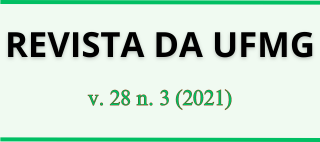Violence and human rights
Situation of isolated indigenous peoples in Brazil
DOI:
https://doi.org/10.35699/2316-770X.2021.42353Palavras-chave:
isolated indigenous peoples , human rights , policy setbacks, AmazonResumo
The decisions taken by Jair Bolsonaro’s government since the first day of his mandate, in January 2019, have weakened the country’s environmental control policies and contributed to reduced inspection, increased deforestation on public lands and, consequently, the violation of the rights of indigenous peoples. There is a great diversity of contexts for isolated indigenous peoples in Brazil, from small groups to a single individual. These groups are the survivors of successive massacres and are threatened by the spread of disease, and for these reasons avoid contact with other agents at any cost. In addition to the need to ensure that their territories remain protected, the decision itself to live in isolation must be guaranteed in accordance with the already established instruments, including the United Nations Declaration on the Rights of Indigenous Peoples and Convention No. 169 of the International Labor Organization (ILO). Despite the traumatic history of contact, Brazil is the country with the largest number of isolated indigenous peoples in South America, as well as has the oldest public policy in terms of guaranteeing the rights of these peoples to self-determination. The measures presented in this article substantially undermine the protection of the rights of isolated indigenous peoples and obstruct the possibility of advancing or enforcing human rights which are internationally recognised and provided for in domestic law.
Referências
ALBERT, Bruce; RAMOS, Alcida R. 2002. Pacificando o branco: Cosmologias do contato Norte-Amazônico. São Paulo: Editora UNESP.
AMORIM, Fabrício Ferreira. 2016. Povos indígenas isolados no Brasil e a política indigenista desenvolvida para efetivação de seus direitos: avanços, caminhos e ameaças. Revista Brasileira de Linguística Antropológica, v. 8(2): 19-39.
CIDH. 2017. Opinión consultive No. 23. Disponível em: http://www.corteidh.or.cr/docs/opiniones/seriea_23_esp.pdf. Acesso em: 27/02/2021
CIMI. 2019. Relatório Violência Contra os Povos Indígenas no Brasil – dados de 2018. Conselho Indigenista Missionário. 156p.
FUNAI. 2012. Povos Indígenas Isolados e de Recente Contato. Fundação Nacional do Índio. Disponível em: http://www.FUNAI.gov.br/index.php/nossas-acoes/povos-indigenas-isolados-e-de-recente-contato. Acesso em: 27/02/2021.
Global Witness. 2019. Enemies of the State? How governments and business silence land and environmental defenders. Global Witness Report. 52p.
ISA. 2020. O impacto da pandemia na Terra Indígena Yanomami. Relatório. Instituto Socioambiental. São Paulo. 37p.
OBSERVATÓRIO DO CLIMA. 2022. A conta chegou: O terceiro ano de destruição ambiental sob Jair Bolsonaro. Relatório Observatório do Clima. 34p.
OVIEDO, Antonio Francisco Perrone; SOARES-FILHO, Britaldo.; LIMA, William; LELES, William RIBEIRO, Amanda; DOS SANTOS, Tiago Moreira. 2019. Ameaças futuras aos territórios dos povos isolados na Amazônia brasileira (p:48-57). In RICARDO, Fany.; GONGORA, Majoi. Cercos e Resistências: Povos Indígenas Isolados na Amazônia Brasileira. Instituto Socioambiental, São Paulo.
RICARDO, Fany.; GONGORA, Majoi. 2019. Cercos e Resistências: Povos Indígenas Isolados na Amazônia Brasileira. Instituto Socioambiental, São Paulo. 255p.
RODRIGUES, Douglas A. 2014. Proteção e Assistência em Saúde dos Povos Indígenas Isolados e Recém Contatados. Amazon Cooperation Treaty Organization, 130p.
YAMADA, Erika Magami, AMORIM, Fabrício Ferreira. 2016. Povos indígenas isolados: autonomia e aplicação do direito de consulta. Revista Brasileira de Linguística Antropológica, v. 8(2): 41-60.




